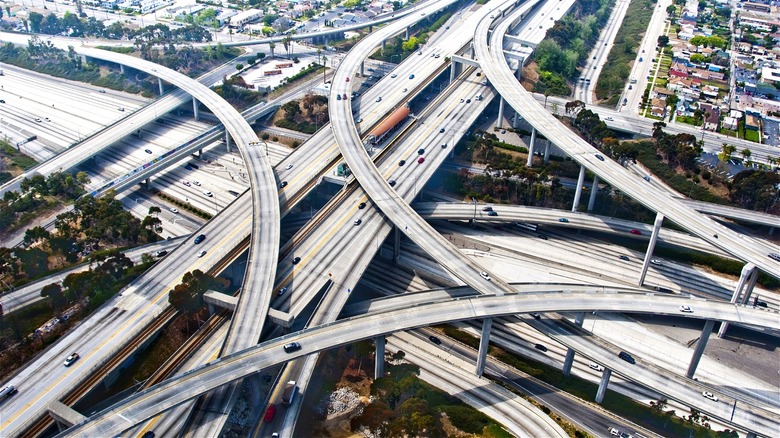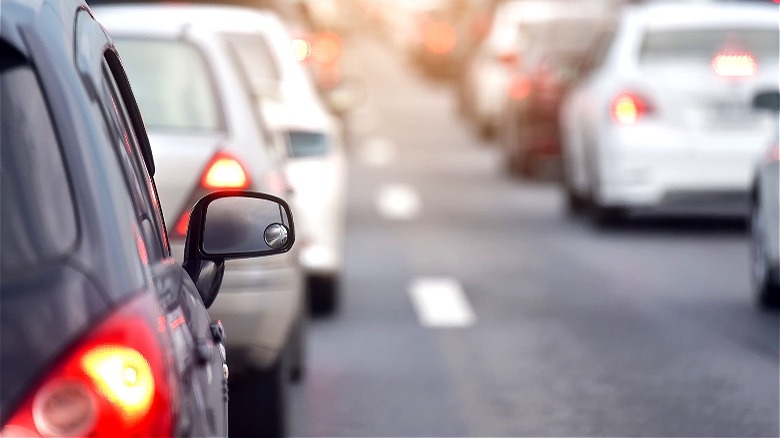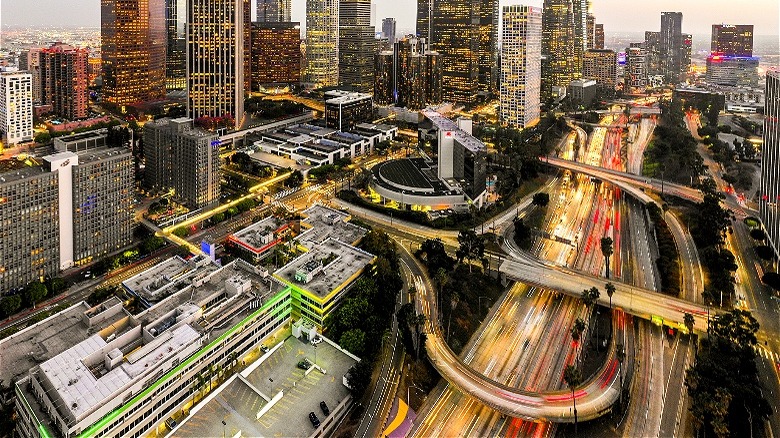Traffic Data Reveals New 9-To-5 Workday Reality
Work life simply hasn't been the same since the COVID-19 pandemic days. While some employees have been able to stay remote, or possibly hybrid, increasingly, companies are trying to force a return to pre-pandemic workplaces. As more companies mandate this return to the office, there emerges a growing conflict between many of these companies and their employees.
According to research from consulting firm Gartner, issues with work-life balance rank among the top five reasons employees leave an employer. The firm also found that companies that implemented a mandatory return-to-office (RTO) demand on their employees had lower worker "intent to stay" — meaning, they were more likely to seek out another job (not to mention, some states are worse places to work than others). While who ultimately will be victorious in the war for remote work remains to be seen, there are some side effects of this changing work-life shift you might have already noticed. Namely, your commute.
Though many of us might miss the empty roads seen early on during the pandemic, traffic is back (and slowly getting worse than ever). Bob Pishue, a transportation analyst at INRIX, said, "Although congestion is returning to pre-COVID levels, we're seeing interesting changes in congestion patterns due to the lingering effects of the pandemic. The continuation of hybrid and remote work is creating new travel peaks from what we've seen previously." While congestion is a positive sign of economic revival, especially in more urban areas of the country, it's also representative of a loss of time for millions of commuters everyday.
The new 9-to-5
According to transportation data from INRIX's 2023 Global Traffic Scorecard, the new hours of congestion are 10 a.m. to 4 p.m. This coincides with a midday rush-hour phenomenon that started in 2020 and has remained ever since. In fact, the average hourly traffic during midday was up 23% in 2023, while morning hourly commute trips were down 12% and evening commute trips were down 9%. This is especially hard on millennials who value their time more than other generations.
What's behind this shift in rush-hour traffic from the traditional nine-to-five? Experts agree that it largely has to do with the way employees are still working remotely or, perhaps more significantly, working hybrid. David Satterwhite, CEO of an employee engagement software company, explained to CNBC, "Employees have become accustomed to the flexibility of working from home and may only come to the office when absolutely necessary. That means they may jump out early to catch a train home, come in late, or pop in for one meeting and then leave." This hasn't only contributed to the dip in more traditional morning and evening commute numbers but has also led to the spike in midday-commute traffic that's clogging up roadways all day long.
In its State of Hybrid Work 2023 survey, video tech company Owl Labs found that 58% of hybrid employees reported checking in at their physical office and then immediately checking out. Known as coffee badging, this behavior has increased in popularity as more companies have forced their employees to show up at the office.
Where traffic is the worst
Even though commute-time changes are happening across the country, some places are still much worse off than others. In fact, of the top 100 urban areas in the world for traffic congestion, 98 of them experienced more delays in 2023 than in 2022, with 71 experiencing an over 10% increase in traffic delays. In the United States, New York, Chicago, Los Angeles, and Boston all made the top 10 list for most congested urban areas in the entire world, according to INRIX's Global Congestion Impact Ranking. Among the most congested roadways in the U.S. in 2023 was the I-4 W in Orlando, Florida, which, for the first time, was on par with the infamous 1-5 S in LA in terms of how many minutes drivers lost during peak congestion times (31 minutes daily, for anyone curious). The next most-congested roadway was the I-95, both North and South, through Stamford, Connecticut; the I-278 W through New York City rounded out the top five.
According to Owl Labs' hybrid work survey, 33% of respondents reported spending between 31 to 45 minutes one-way for their daily commute. This increase in commuting adds to the costs and stress levels of workers, contributing to the rise in burnout sweeping U.S. companies. A 2023 Gallup poll found that only 33% of all employees reported being engaged with their work (across both full- and part-time employees). Fifty percent, meanwhile, weren't engaged, while 16% of those polled were actively disengaged. This has contributed to the rise of things like quiet quitting, which further fuels declining productivity. (On that note, for some, taking a mini retirement might prove a remedy for corporate burnout.)


